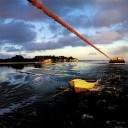
Ohiwa – The food basket of many hands
East of Whakatane, in a sparsely populated segment of the Bay of Plenty, lies one of the country’s smaller and less well-known harbours: Ohiwa. Shallow and dotted with islands, its warm waters have long been a major food resource for local iwi. For even longer, migratory birds have fattened themselves up here for their annual flight back to the northern hemisphere. Asin many coastal settlements, locals worry about the impact of development and tourism on their way of life, but for now Cammy Savage can still fill her kete with cockles, and the harbour lives up to its reputation as”te raweketia a teringaringa,” the food basket of many hands.


The aluminium dinghy makes slow headway against the tidal flow. Ken Barsdell, a close friend of mine and a long-time resident of Ohiwa Harbour, digs his oars into the current. Overhead, a lone gull wheels tirelessly, searching for any sign of movement beneath the surface. It must have flown over countless craft like this one, crossing harbour channels in search of kai moana.
We beach the “tinnie” on the mudflats of Motuotu Island and make our way through the mangroves taking hold along the shoreline. Ohiwa is traditionally thought of as the southernmost home of this semi-tropical tree, and while winter frosts here retard its growth, never allowing it to grow as high as in Northland, the locals have noted mangroves seeding more prolifically round the tidal fringes in recent years.
Our footprints leave a trail of ankle-deep hollows in the mud, which squelches up between bare toes and dries in crusty splatters upon our legs. Soon we reach our destination. Bending down, Barsdell points to some jagged frills poking from the mud. “Whalla!” he says, plucking a sizeable Pacific oyster from its bed. Before long our bucket is brimming.
That evening, round the embers of a barbecue, Barsdell talks about the harbour and the impression it has made on his life. Originally from the south, he arrived here by chance 23 years ago. Detouring off the tar seal in the company of a local land agent, he was shown a hillside property for sale in a quiet corner of Ohiwa, partially covered in native bush, with a neglected cottage on the flat. An instant liking for the place saw him scrape together finance and make a deposit—a hard task on a beginner teacher’s salary and over the years his initial attraction has matured into a deep love for the harbour and its surroundings.
I share his feelings about Ohiwa. I spent my teenage years close to its shores. First there were camping holidays at adjacent Ohope, the seaside community that connects the harbour with the larger service towns of Whakatane and beyond. Later the family moved to Whakatane, from where surfing regularly drew me to the ocean beaches of Ohope. Eventually I started working for a local surfboard shaper who had his factory in one of the old wharf sheds at Port Ohope.
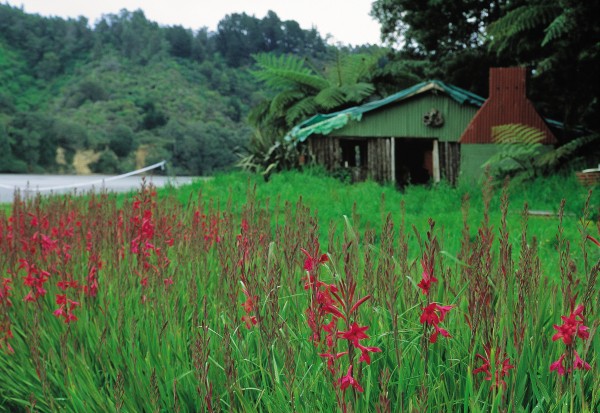
During those years spent around the port, I came to know the moods of the harbour and the way the season,, dance across its stage. How the light shimmers across the waters as the sun sinks behind jagged ridgelines on the western shore. Or the sea fog of a winter morning, thick as soup, lingers over the myriad channels and sandbars.
The talk round the barbecue becomes more impassioned. Barsdell’s neighbours, on a dairy unit, have just put the block up for auction. “That means we’ll be seeing more cars up and down our road,” he says. “More houses will be built, and land prices will sky-rocket. Everybody’s rates will go up, making it harder for us to live here.”
It’s a lament all too familiar to seaside residents. You find a place to get away from it all, and a few years later “all” comes knocking on your door This is certainly happening in Ohiwa. In recent years the harbour has gone from bucolic backwater to developer’s dream. Interest in land round its shores has never been greater. And as Ohope and the subdivisions near the port become increasingly claustrophobic, the real-estate market is casting a hungry eye at what land remains round the harbour’s edges.
It was the abundance that Tangaroa, god of the sea, could deliver that drew early Maori to Ohiwa. Over the years, several iwi have laid claim to the harbour, and many battles have been fought over who would fish its shores. Tradition has it that one such conflict in the 1840s, between local Ngati Awa and a raiding party of Whakatohea, from Opotiki, brought Mereira, a young Ngati Awa woman, to the brink of despair.
As the Whakatohea warriors approached the pa, Mereira, in a move reminiscent of King Solomon, held up her baby, the product of a union with a Whakatohea man, and threatened to dash it on the rocks if the men didn’t stop fighting. Sobered by this action, the two sides called off the battle and made a lasting peace pact.
These days, Upoko-rehe, a hapu of Whakatohea, are regarded as the kaitiaki, or guardians, of the harbour. One spring morning I pay a visit to Charlie Aramoana, kaumatua for Upoko-rehe, to ask him about his life here and the changes he has seen in the harbour.

Aramoana lives a kilometre or so from the harbour, at Kutarere. State Highway 2, the busy inland carriageway that links Opotiki, Gisborne and the pine forests of East Cape with the paper mill at Kawerau and the port of Tauranga, flanks the settlement.
Kutarere has seen better days. Although the store still sports the trademark Coca-Cola hoardings, it’s been years since travellers quenched their thirst here. In the 1920s, however, Kutarere was a busy staging post and the harbour’s principal landing place for sea traffic, with its own wharf and a population of over a thousand. “The port of all the Urewera,” it was called.
Today there’s a scattering of weatherboard-and-Fibrolite homes, a historic green-roofed church, a marae, and not much else. The school, on a rise at the edge of the village, claims the choicest outlook over the harbour, a picturesque distraction for study-weary students.
Aramoana, softly spoken and “somewhere in his sixties,” recalls when all the general goods for the district were more often landed at Kutarere than at Opotiki, with its tricky river bar. The practice continued right up to the 1960s, when a new wharf at Port Ohope, with a channel a few fathoms deeper, was commissioned. “Those were the hustle, bustle days of Kutarere,” he says. “Then the bigger boats started coming in and went up that way, and Kutarere became a backwater again.
“We used to go fishing in the harbour, and, oh gosh, those days no rods! You’d get cut hands with those old linen lines, and if you fished for half an hour, you wouldn’t be able to carry home your load of snapper. And all cocklecrunchers, too. They were big. Those were the days, man. You don’t get the snapper like that any more. Then about the ’70s the trawlers started coming in hard. We still blame the trawlers for the loss of the snapper.
“Another change we’ve noticed as local people is the rareness of the butterfish. The parore. They go around in schools, and their job, when the harbour was in its natural state, was to keep down the growth of seaweed. That’s what they lived on. But now there’s hardly any of them around.”
For Aramoana, and Upoko-rehe, the challenge now is to protect the harbour from further losses. “When I was growing up, I used to wish, gee, if only we could have a road going around here, access would be much better to get into the harbour. ‘Course, it wasn’t very long after and a road was put through, allowing people in there all the time. And you know the consequences now. More kai is going out. And all these houses going up.”
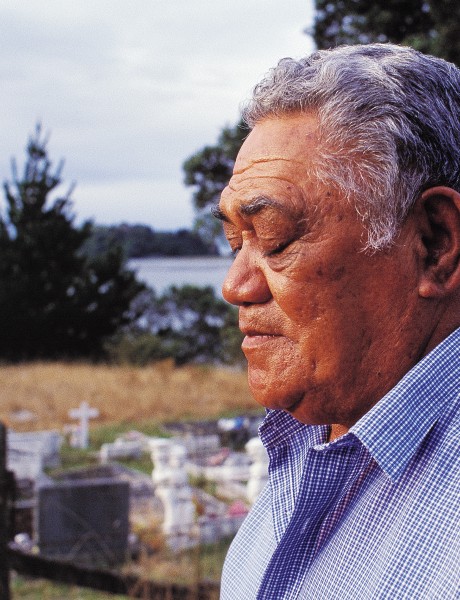
Leaving Kutarere, I backtrack past the camping ground and walk out to the sickle-shaped Ohiwa sand spit, jutting from the eastern bank at the harbour entrance. Standing there with the tide washing past, it’s easy to appreciate why early European mariners mistook the channel for a river.
Across the channel from me are the restless sands of the Ohope spit. Without this jutting dune formation, over 2000 years old, there wouldn’t be a harbour, just a succession of coves and bays.
Sand was to be the rack and ruin of landholders on the Ohiwa spit. Some entertained grand ideas of creating substantial settlements, only to have them carried away with the tide.
In 1873, Captain John Rushton, an enterprising Land War veteran, was granted a licence to open a pub here, on the condition that, along with pulling pints, he also ran a ferryboat for patrons to and from Ohope. Until then there had been no official service, travellers relying instead on local Maori to ferry them across. This wasn’t without its dangers. Crossing the mouth in a leaky canoe one blustery day in 1842, two Catholic priests became worried enough in mid-channel to give each other absolution.
With the Ferry Hotel established, a small township soon rose beside it, and sections were offered for sale. Taking little heed of the proverbial adage that advises the best foundations to build on, settlers quickly erected homes on the spit. A post office was opened in 1877, and the harbour’s first wharf made its appearance in 1896. Regular steamship services to the district had begun in 1867, and these were often diverted to Ohiwa when the bars at Whakatane or Opotiki became too treacherous.
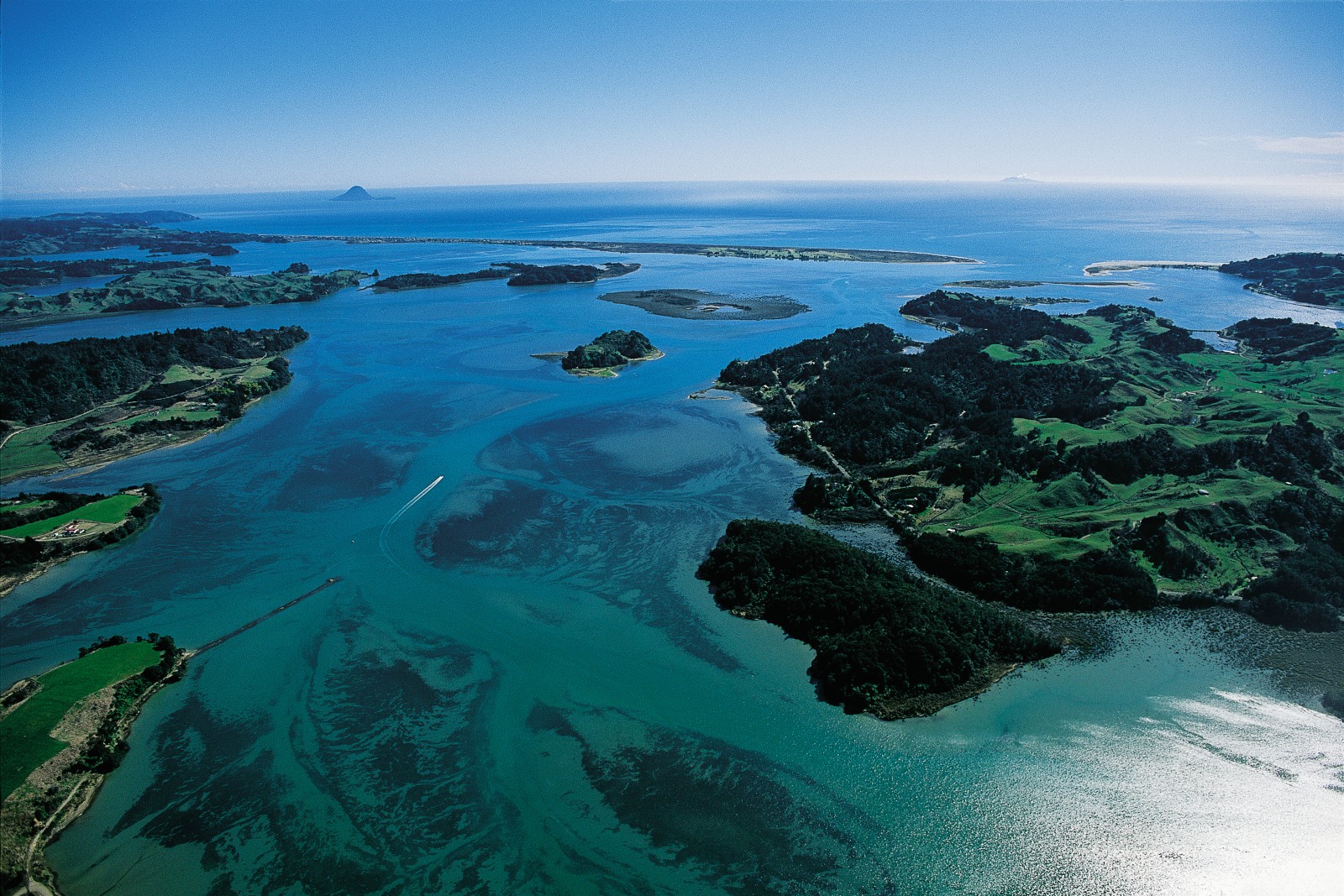
The lively times at Ohiwa township proved temporary. Erosion soon left its mark. By 1915 the town was well and truly doomed, and one by one the buildings vanished. All that remains of that first tiny settlement protrudes from the sand: the stumps of a line of telegraph poles.
In the early 1960s, the new owner of the spit, the Lands and Survey Department, suffering a bout of amnesia, decided the sand was sufficiently stable to offer sections for sale. New Zealanders with beach-front retirement plans leapt at the chance to purchase land. But quicker than sand through an hourglass, their vision of seaside happiness disappeared down the beach with the waves.
For the first few years the erosion was only gradual-6-10 m a year. Then, in 1978, the sea carved 56 m from the foreshore. All the residents could do was stand and stare as their homes were swallowed by the surf. Their earlier attempts to curtail the erosion had taken the form of strewing the foreshore with car wrecks, stacking bundles of manuka and erecting a line of railway irons with strings of tyres attached. That particular eyesore was later buried by the unpredictable sand.
[Chapter Break]
Making my way a long the spit, I see flocks of shore birds fossicking in the shallows. Pied stilts, dapper in their best black evening jackets, stride purposefully across the mudflats like members of some exclusive club. Pairs of orange beaked oystercatchers dash maddeningly about the dunes seeking cover. One minute here, one minute there, chasing each other around in some sort of endless slapstick routine. Shags, holding themselves aloof on the edge of the party, preen themselves in preparation for the evening meal. Sandpipers, herons and cattle egrets. Plovers, wrybills, whimbrills, spoonbills and lesser knots said fast, their names leave the tongue with its own set of knots all make an appearance here at Café Ohiwa.
From nowhere, a squadron of bar-tailed godwits wings past in a chevron of a hundred or more. Soon another cluster arrives. And another. Within no time the area is teeming with birds. Thousands upon thousands fill this sheltered corner of the harbour as the tide covers the mudflats they’ve been working all morning.
Ohiwa is among many New Zealand summer-holiday destinations for the godwit, or kuaka. In early spring, these “top guns” of the bird world hitch an 11,000 km ride across the Pacific on air currents that take them high into the stratosphere, a domain normally reserved for Stealth bombers and NASA training flights. Half-starved, they descend on Ohiwa’s pantry of edibles, and for the next six months “carbo up” for the long trip back to their breeding grounds in the Arctic wastelands of Alaska.

Charlie Aramoana recalls how, to break the monotony of a predominantly seafood diet, local Maori snared and ate kuaka. The harvest usually happened just before the great fly-away in March, when the birds were rich in fat and protein. But after six months of themselves gorging on seafood, the birds tasted decidedly fishy—not such a change in meal-time flavour after all.
In those days, Aramoana’s grandmother and the other women set their kuaka traps among the grasses of the Ohope spit. Today, the birds roost on the far side of the estuary. Their earlier resting place is now a golf course, and suburbia has taken root among the dunes.
A few minutes away as the godwit flies but 10 or 15 by car I meet Narena Olliver, advocate for Ohiwa’s bird life. Her home, Godwit House, is perched commandingly on one of two promontories, both being developed for residential sites, which protrude into the belly of Ohiwa Harbour. Sipping iced water to counter the heat of the day, we discuss the plight of the kuaka and all its feathery friends.
Olliver is an expert on the harbour’s birdlife. She maintain,, a website on New Zealand birds, posting regular updates on the comings and goings of migrant species passing Ohiwa’s shores, and hosts international birders who want to experience New Zealand’s avian diversity.
That diversity is under threat, she tells me. “And until we place an economic value on the birds of the harbour,” she says, “they will continue to suffer through loss of habitat, predators and all the pressures people place on them.” But how can you calculate such a value, I ask?
In some parts of the world, rare birds now attract more people than there are birds, she informs me. “We could do the same here. For a start, by organising proper festivals which celebrate the arrival and departure of the godwits and other migratory species. Overseas, similar festivals are a big attraction.”
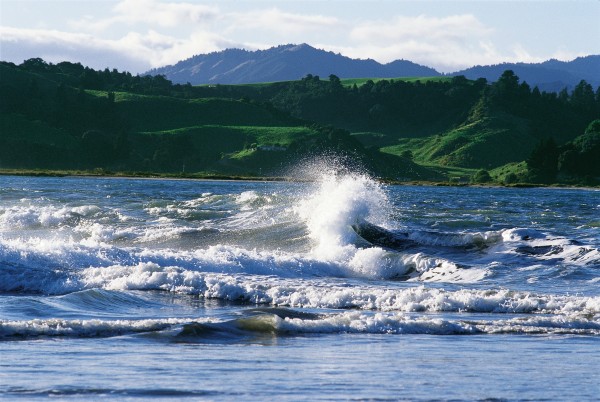
Olliver’s own homestay service is dedicated to birdwatchers who, like the godwits, are predominantly northern hemispherites. They are used to travelling to distant shores for the chance to glimpse rare varieties. They call these “life birds,” since the opportunity to see one may present itself only once in a lifetime. Affluent and educated, such birders frequently spend up large in the local economies they visit.
Ohiwa doesn’t host species rare enough to be called life birds, but the podocarp forests of Rotorua, little more than an hour away, shelter species the sighting of which would definitely constitute a once-in-a-lifetime experience. And in the hills above Ohope, kiwi can still be found.
The repatriation of such land birds into the ecology of the harbour requires forests. But re establishing native trees on land laid bare by the farmer’s scythe several decades earlier takes time. And money. One person who thought he had the answer to that problem is Rocky Mountain cowboy Richard St John.
St John, a cattle rancher from Oregon (as one of the “last true cowboys” he worked the second-largest cattle ranch in the world, just five acres short of a million), stumbled upon Ohiwa while visiting New Zealand on a fishing trip, and in similar vein to the bloke who owned the Remington shaver company, he liked it so much he bought the place. A 100 ha chunk of it, anyway, at the end of Paparoa Road.
St John’s plan to encourage the harbour’s native vegetation to re-sprout involves encouraging environmentally conscious people to purchase sites on his Whitiwhiti Point development. He wants to set up “an international community of people with a unified purpose: to live on the land and share in its care.”
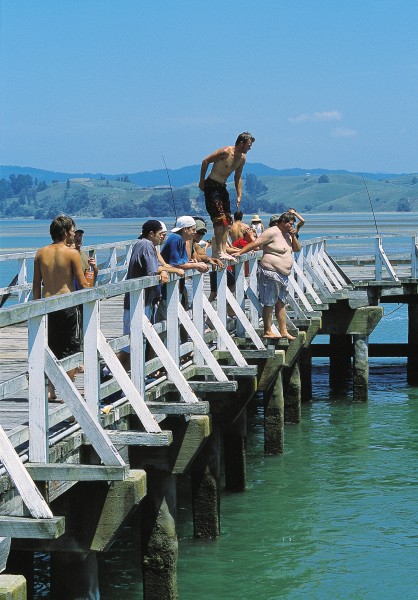
By placing a covenant over the land with a restrictive set of conditions governing what purchasers can do, St John aims to create an environmentalist’s El Dorado on the banks of Ohiwa. For example, residents will be allowed to use only natural materials for house construction. Timber, adobe and rammed earth will be permissible, but corrugated iron and steel roofs will not. To blend with the landscape, houses will have to be coloured in earth tones or greens, and two-storey dwellings will be allowed only where there is a tall stand of bush nearby. Permitted plants will be listed, and, in the interests of encouraging bird life, furry pets will be forbidden.
For the moment, though, St John’s environmental dream is in limbo, the subdivision proposal having been knocked back at the resource-consent stage. Environment
Bay of Plenty, the Department of Conservation and Forest and Bird have all expressed fears that the residents mightn’t be able to be trusted to adhere to St John’s vision. Although other groups have lent support to the idea, the green light has yet to come.
[Chapter break]
Towards the end of the summer-holiday season, with a spring tide raising the tepid waters of the harbour a few feet extra, I join ex-CIB detective Bill Plunket and his two passengers for the day aboard his 26-foot American-built pontoon boat, 7e Torea. Plunket, relaxed in his new career as launch master, runs a charter tour round the harbour, operating from Port Ohope.
After a lifetime on the force, how did he wind up here, expounding the harbour’s history and ecology? “Simple,” he tells me. “After all the violence I experienced in my job as a policeman, I was looking for the most non-violent place I could go to for the rest of my working days. I found that place here.”
The outboard kicks into life, and with a swirl of turbulence we ease away from the wharf. I settle back on the plush upholstery and listen as Plunket, with meticulous detail a habit he hasn’t lost from his investigative days retells the account of a bloody battle between marauding Nga Puhi warriors, heavily armed with traded European weaponry, and local harbour iwi bearing nothing more than taiaha and mere sticks and stones against modern firepower. He points out the beachhead on Hokianga Island where the slaughter is said to have occurred.

Hokianga Island, one of six islands which dot the inner recesses of the harbour, is uninhabited now, but it once had a population of hundreds. Te Kooti Rikirangi Te Turuki, the notorious rebel prophet from Gisborne, lived here in the weeks before his death, along with a contingent of his Ringatu followers.
Turning Te Torea towards Ohiwa’s mouth, Bill takes advantage of the higher than usual tide for a close inspection of nearby Tern Island, a tussock-topped mudflat which is an important breeding ground for seabirds. Along with terns, both Caspian and white-fronted, vulnerable species such as the New Zealand dotterill breed here. The dotterills derive some protection from the terns, Plunket says, which mob airborne raiders such as harriers and black-backed gulls on the lookout for eggs.
Apart from Tern Island, there are few places on the harbour where birds are safe from hungry predators or thoughtless humans. Both arms of the harbour entrance are popular surfcasting spots. The birds that nest among the dunes of both spits will stand little chance, says Plunket, “until surfcasters stop thinking it’s their divine right to drive up on their 4WD bikes and RVs and park where they plan to fish.”
[Chapter Break]
Another Day, in a different season, I come upon a lone whitebaiter, Garth Beggs, fishing the mouth of the Nukuhou Stream. His day isn’t going well. He’s just kicked over a bucket containing the morning’s catchlittle more than a handful of tiny translucent slivers, now eagerly making their escape through the rain-soaked grass, back into the Nukuhou. His mood looks as dark as the storm clouds passing above us. Despite the ill weather and the loss of much of his catch, Beggs is keen to talk. Conversation, I suspect, has been scarce this morning. There isn’t another soul visible on this neck of the harbour.
The Nukuhou drains the harbour’s main catchment, Beggs tells me. It twists and turns through the Cheddar Valley, parallel with Wainui Road, the connecting roadway from Ohope, until it flows into the harbour on the western flank a kilometre or so past the old dairy factory. In early spring, whitebaiters line the edge of the stream, and in places you can dip your net without even leaving the driver’s seat.
Despite his poor showing this morning, Beggs says the season has been a good one, assuring me that when the sun’s out and the bait’s running, “the bush telegraph is hot, and Wainui Road is busier than Queen Street.”
The galaxiids may not be running well, but something else is: Ohiwa’s greatest menace, a load of silt being carried downstream and sending a muddy stain mushrooming across the harbour.
The Bay of Plenty’s porous pumice soil, spat out by volcanic action eons ago, takes little hold on the hillsides surrounding the harbour. A day or two of rain can deposit a quarryful of sediment in the harbour’s gut. Farmland, cleared of stabilising forest and scrub, was once the culprit, but now the harvesting of pine in the backblocks is creating a new set of erosional problems.
With around two-thirds of Ohiwa’s 2700 ha seabed dry during the lowest tides, it is not hard to see that long-term siltation threatens to clog the harbour’s arteries. Mingled with the mud washing down the slopes comes a cocktail of agricultural chemicals, along with seepage from domestic septic tanks.
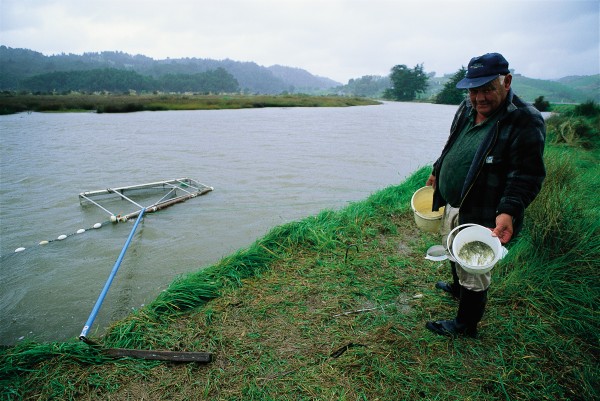
The influx regularly forces the Ohiwa Oyster Farm, in the farthest reaches of the harbour, to suspend harvesting, its owner, Rick Yorke, tells me. Yorke, a sun-browned, nuggety character wearing a chain-mail glove to protect himself from knife wounds, stands at a bench with a pile of oysters in front of him. There is a constant click-click of metal against mollusc shell as hi, dell knife-hand shucks an oyster every second or two.
“On average, we harvest 50,000 dozen oysters a year from the beds,” Yorke tells me. “When it rains, fresh water enters the harbour, bringing with it diesel off the roads, superphosphates and pesticides from the farms and all manner of nasties which raise the bacteria count. I only have to get 10 mls of rain and it’ll close me for two days. Twenty mls is four days and 70 shuts me down for seven.”
Farm run-off, particularly effluent, worries Yorke, because it could spell a major health disaster for the oysters and the harbour’s shellfish in general. To ward off that threat, dairy farms in the harbour vicinity have been forced to cease operating if they have been unable to deal with their effluent discharge appropriately, and the practice, routine only a decade ago, of allowing stock to roam the foreshore has been banned.
Yorke believes all farm managers, himself included, must take responsibility for the impact their activities have on the environment. “All farming, whether it be marine, fresh-water or land-based, has now got to be a conscience industry.”
A short walk from the oyster farm an important historic site, Tauwhare Pa, nestles in the crook of a sand spit that stretches 8 km to the estuary mouth. At the summit, a gusty easterly, whipping off the sea, buffets me as I drink in the all-encompassing view.
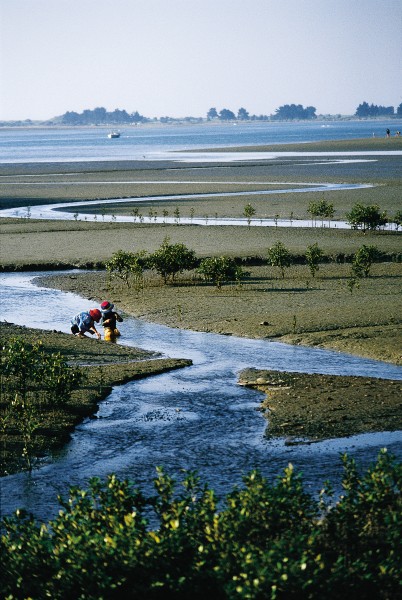
Maybe it’s only something in the wind, but a tingle travels down my spine, and for a moment I feel myself transported back through the ages. I see a many-tiered village. The smoke of cooking fires drifts with the breeze. There is the sound of children’s laughter, and the melody of waiata. I see a distant waka navigating homeward, men returning from a fishing trip beyond the harbour bar. The scene is as peaceful as a postcard.
A blast of wind returns me to the here and now. The scene changes. A solitary windsurfer tacks across the channel. A couple walk their dog as the evening light descends. Commuter tail-lights twinkle along Harbour Road. Families will soon be gathering round their evening meals.
The two scenes are perhaps not so different. Ohiwa’s enduring attraction remains. I retrace my steps down from Tauwhare’s summit and pause at the start of the track to read an inscription, in Maori and English.









